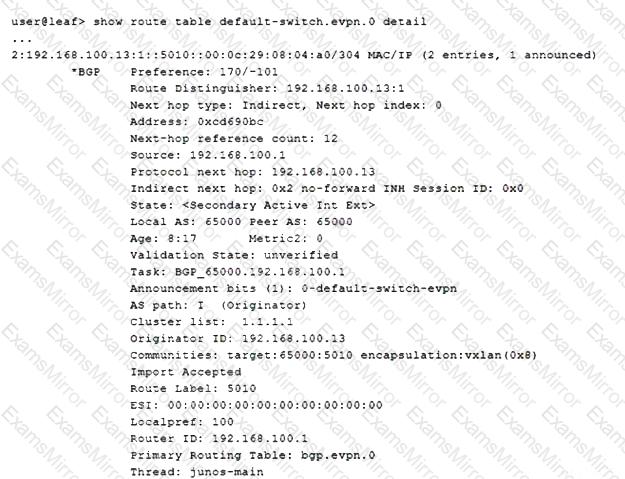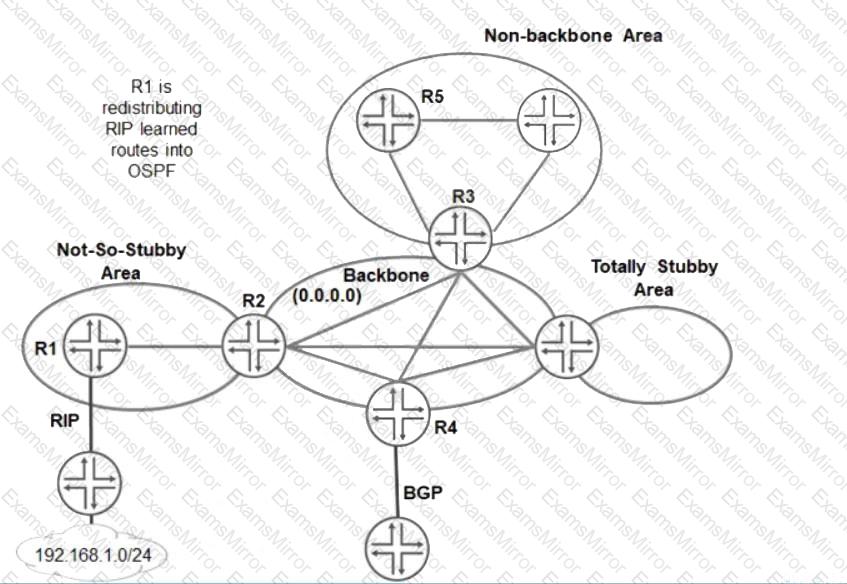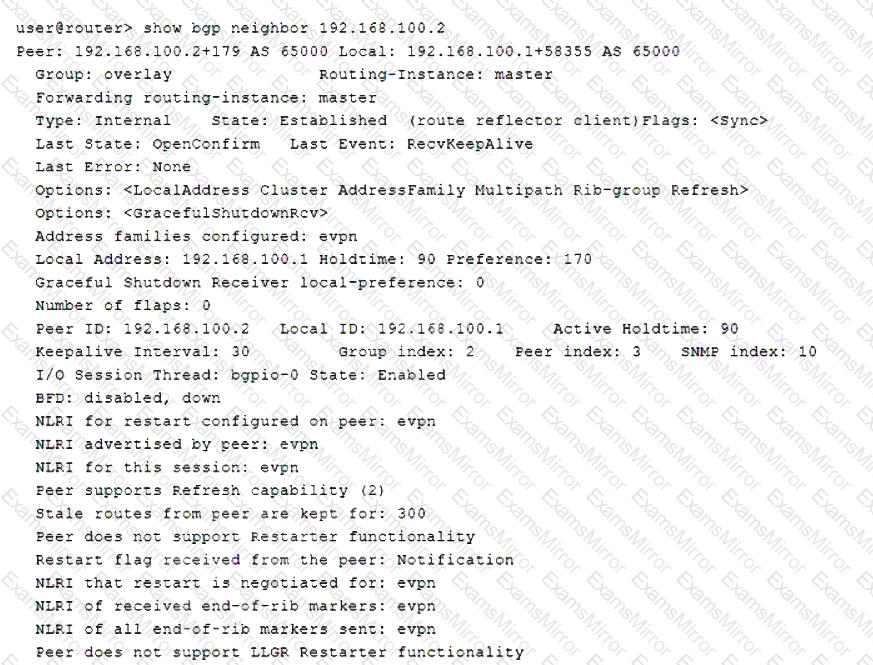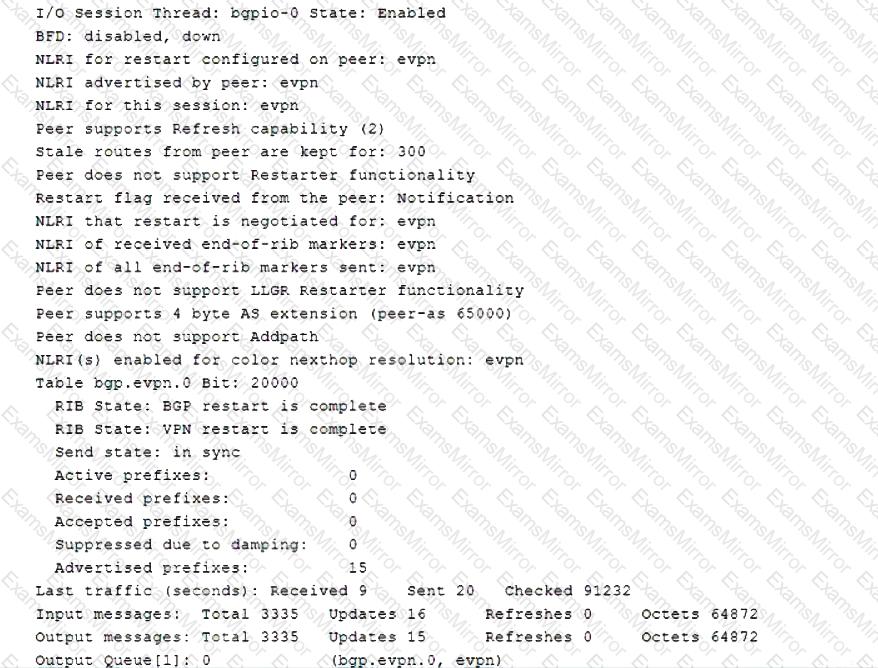Cyber Monday Special Limited Time 70% Discount Offer - Ends in 0d 00h 00m 00s - Coupon code = getmirror
Pass the Juniper JNCIP-ENT JN0-649 Questions and answers with ExamsMirror
Exam JN0-649 Premium Access
View all detail and faqs for the JN0-649 exam
518 Students Passed
90% Average Score
98% Same Questions
You want to create an OSPF area that only contains intra-area route information in the form of Type 1 and Type 2 LSAs.
In this scenario, which area is needed to accomplish this task?
Referring to the exhibit, which two statements are correct? (Choose two.)

Referring to the exhibit, which LSA type is used to advertise 192.168.1.0/24 to R5?

Referring to the exhibit, which two statements are correct? (Choose two.)


You are asked to implement fault tolerant RPs in your multicast network.
Which two solutions would accomplish this behavior? (Choose two.)
Referring to the exhibit, which statement is correct?

What are two similarities between OSPFv2 and OSPFv3? (Choose two.)
You are deploying an 802.1X solution and must determine what would happen if clients are unable to re-authenticate to the RADIUS server.
In this scenario, which configuration would provide access to the network if the supplicant is already authenticated?
Which two statements are correct about the deployment of EVPN-VXLAN on QFX Series devices? (Choose two.)
You recently committed a change to a router to reject OSPF routes sourced from area 10. However, you are still seeing area 10 routes in the routing table.
Referring to the exhibit, which statement is correct?

TOP CODES
Top selling exam codes in the certification world, popular, in demand and updated to help you pass on the first try.
